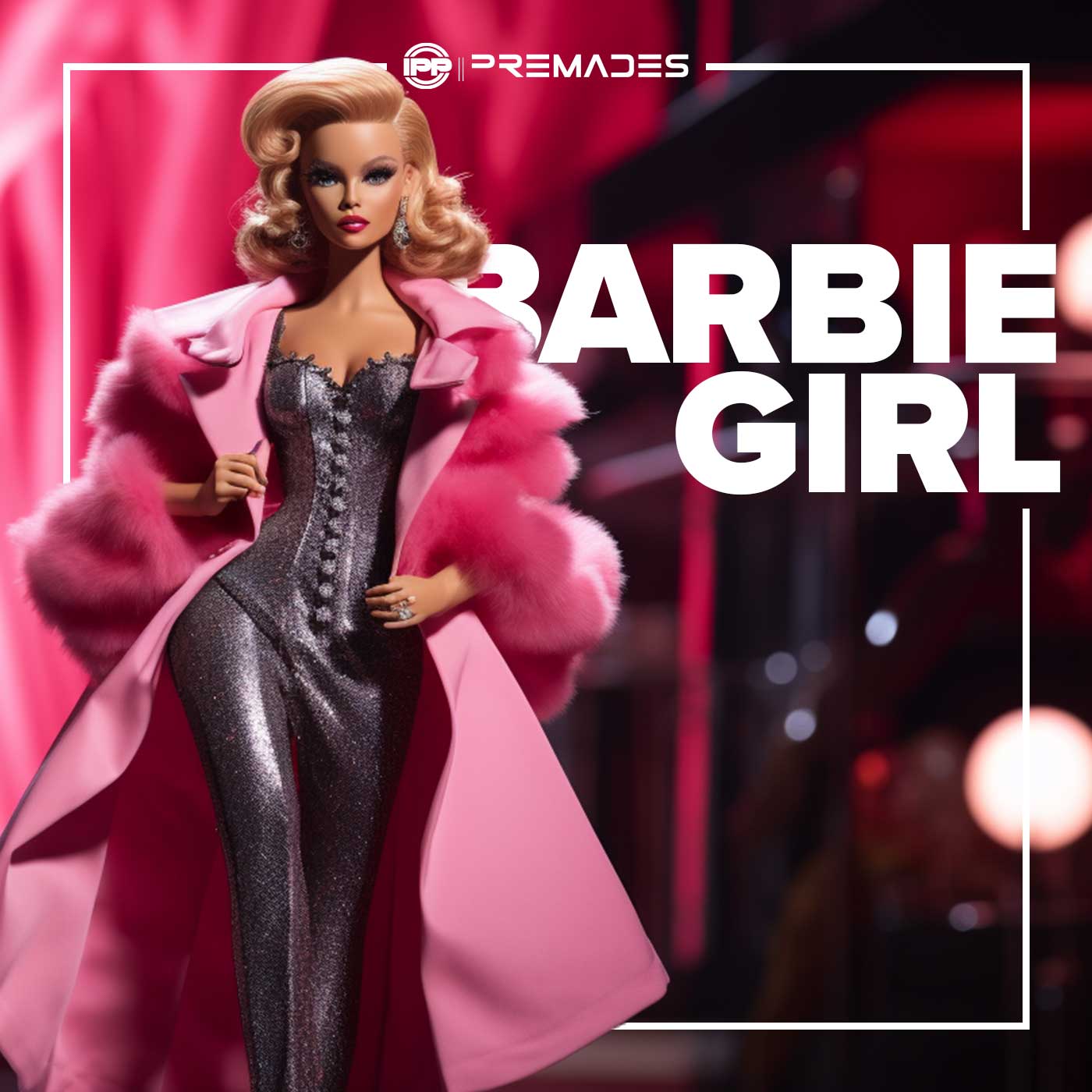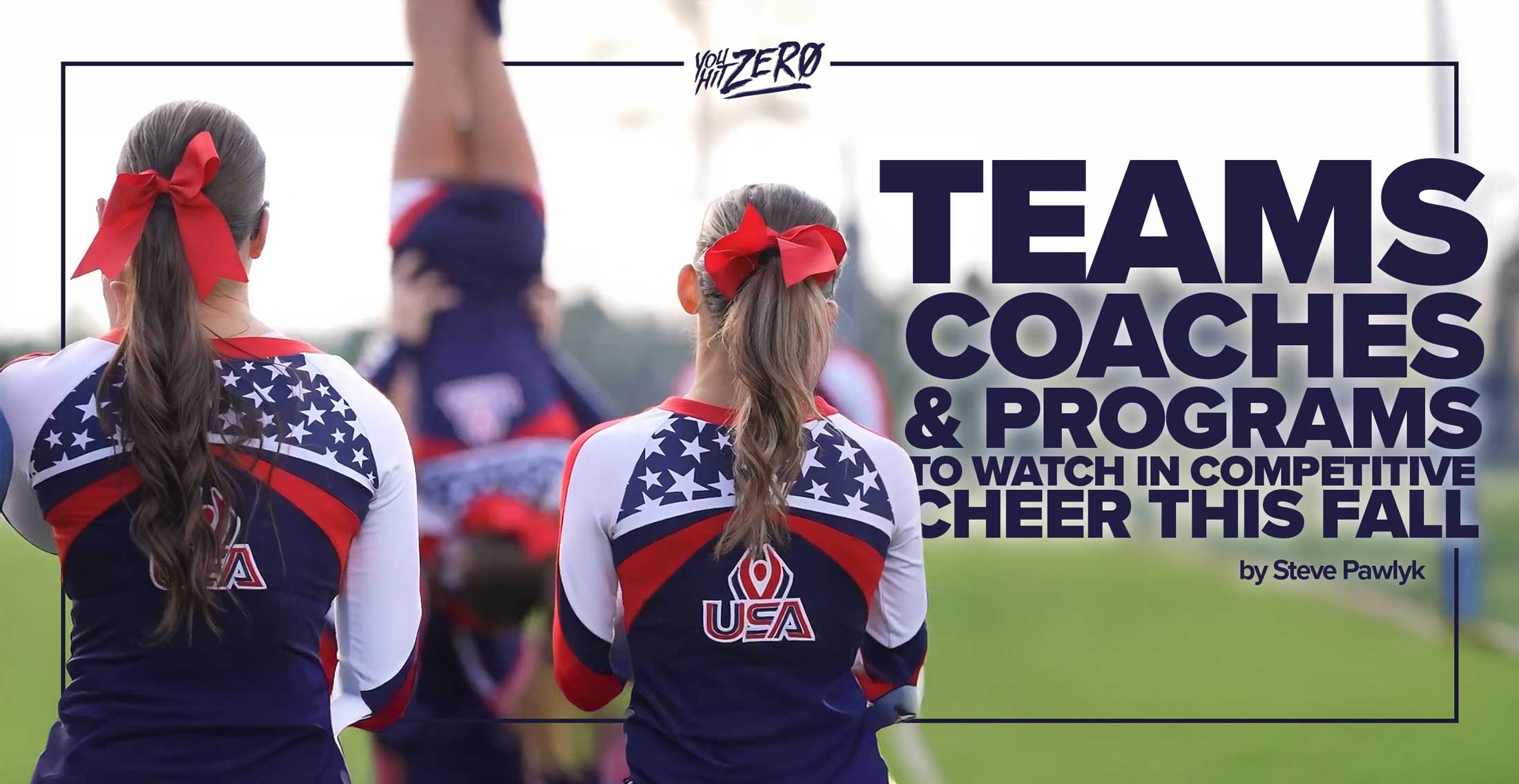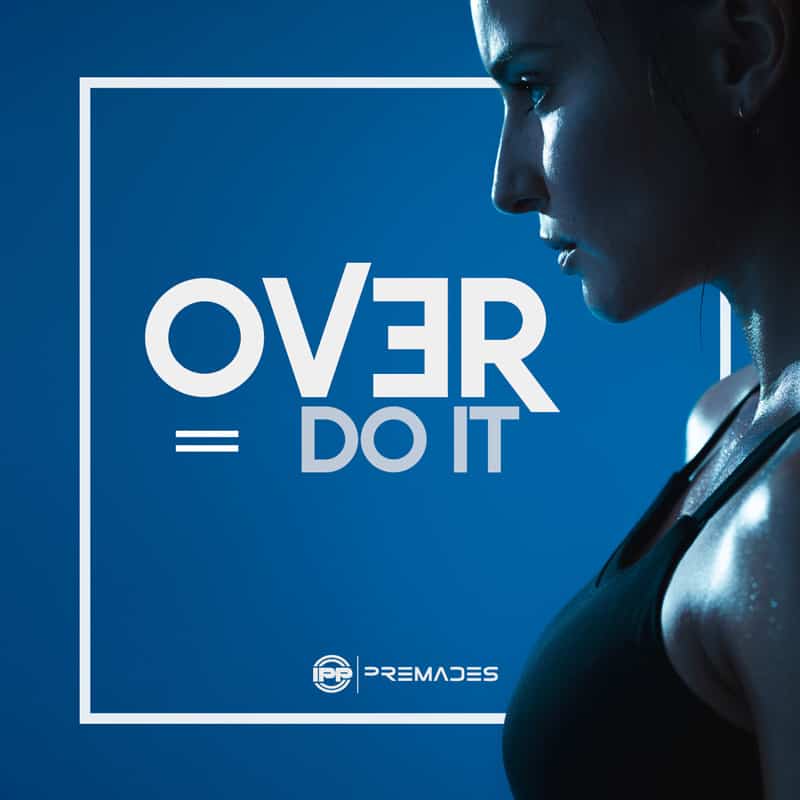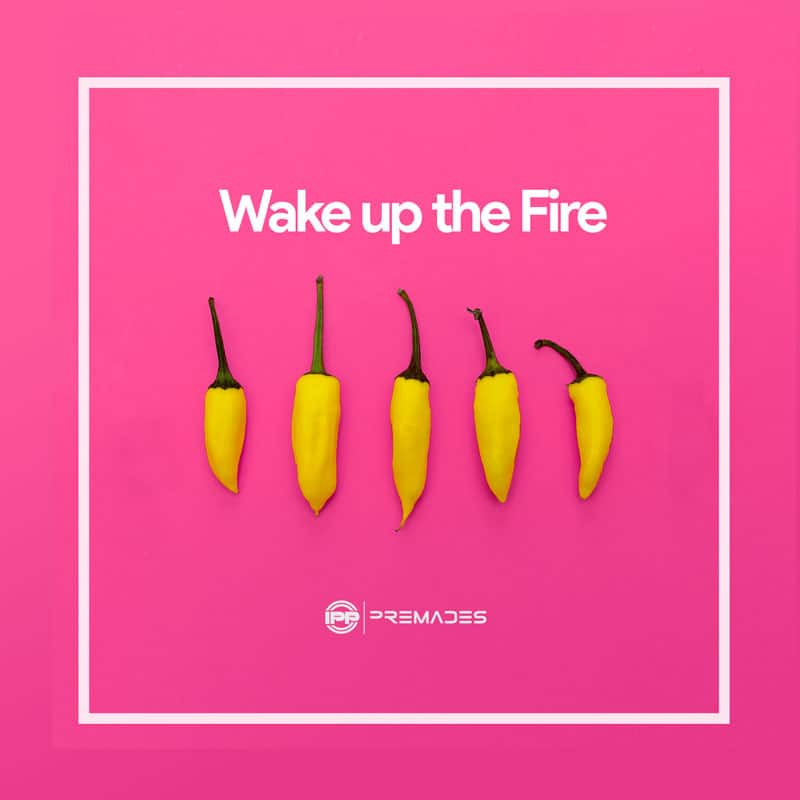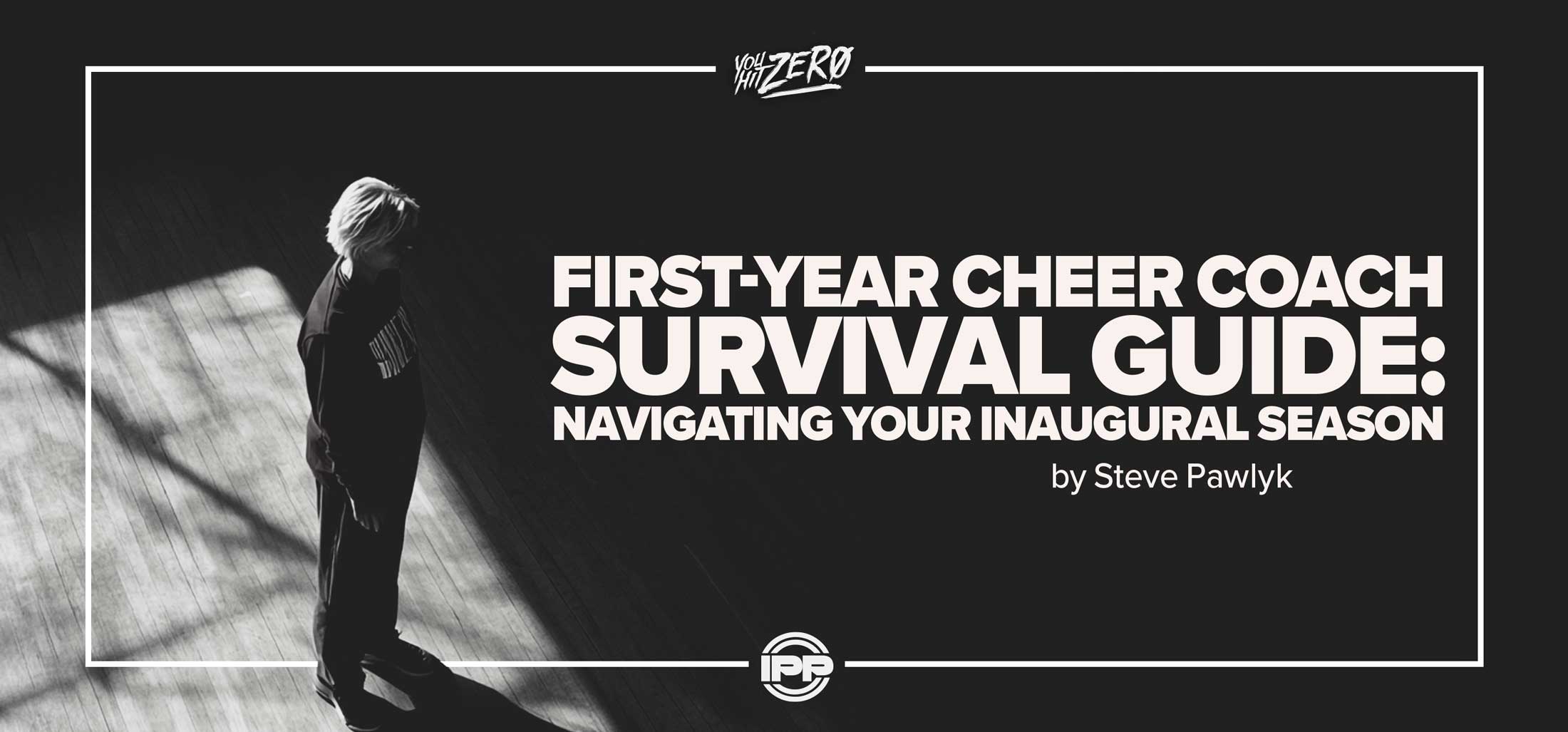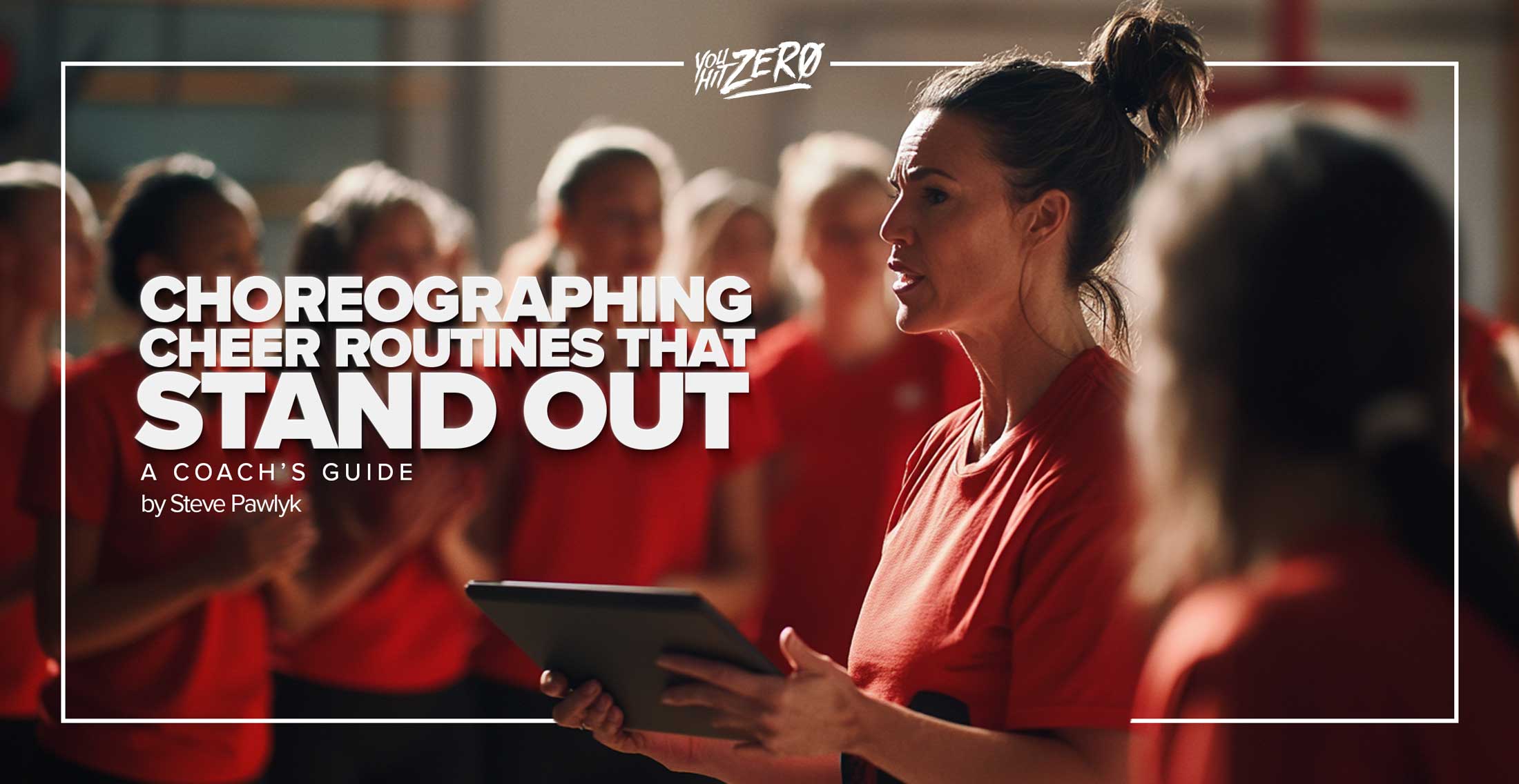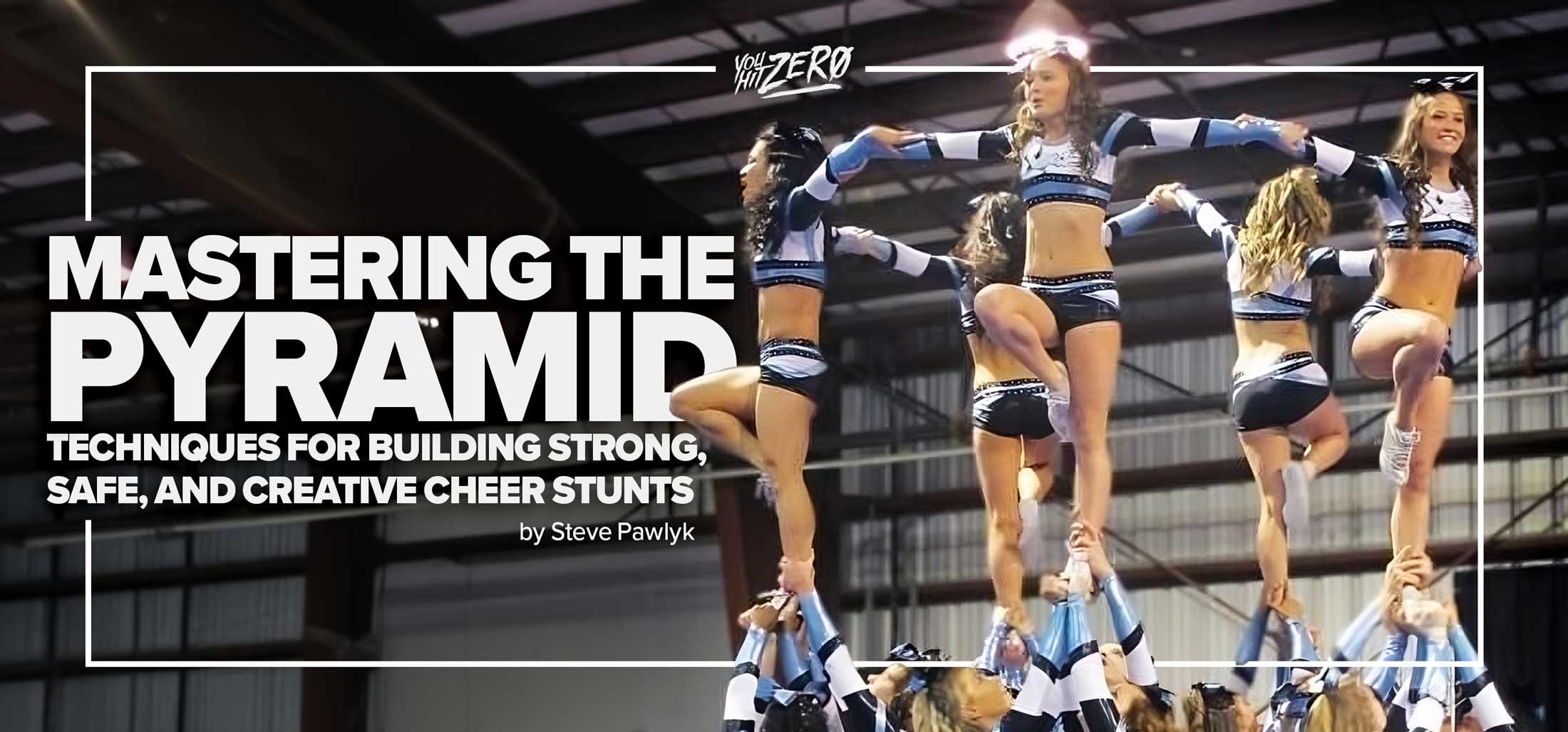By Steve Pawlyk
Published June 27, 2025
Competitive cheer in the United States is entering a new season this fall with a host of standout teams and individuals poised to make waves. Across high school, collegiate, and all-star levels, certain programs have distinguished themselves through championship success, innovative routines, and unique training philosophies. Today we’re gonna spotlight some of these must-watch teams, athletes, and coaches – and, importantly, what you can learn from their approaches to elevate your own cheer game.
High School Cheer Standouts
High school cheerleading continues to produce powerhouse programs that dominate nationally. Two programs in particular – one an established dynasty and the other a rapidly rising force – exemplify what it takes to reach the top.
Greenup County High School (Kentucky) – Tradition Meets Tenacity
One of the most legendary high school cheer programs in the nation, Greenup County High School has a storied legacy built over four decades. Head coach Candy Berry has led the Kentucky school to an astounding 17 UCA national titles in her career, with the latest championship coming in early 2024. After a seven-year drought since 2017, Berry’s squad reclaimed the crown this past season, proving that tradition combined with tenacity is a winning formula.
Berry emphasizes to each new team the weight of Greenup’s history: “We tell them from the get-go… you have a history, you have a tradition here,” she says. This mindset instills pride and motivation in the athletes to add their own chapter to the school’s legacy. In February’s nationals, that motivation paid off – Greenup hit a zero-deduction routine and erupted with joy upon hearing they’d finally taken first place again.
Candy Berry, coaching at Greenup since the early 1980s, attributes the program’s sustained excellence to each generation’s dedication: “They all have the same dream but it’s a different group of kids that strive for it in their own way,” she explains, noting that every championship is special because new athletes achieved it through their own hard work. Under Berry’s leadership, Greenup has set a standard of consistency, fundamentals, and pride in tradition that any school can emulate.
Takeaway: A strong tradition can be a springboard for success – use your program’s history to inspire current athletes. Holding today’s team to the high expectations set by past champions fosters accountability and hunger. At the same time, each team should be allowed to find its own identity and motivation. Greenup’s resurgence teaches that perseverance and pride can revive any program’s fortunes; no matter how long it’s been since your last win, keep striving and believe in your legacy.
Live Oak High School (Louisiana) – Pushing the Difficulty Bar
On the opposite end of the spectrum, Live Oak High School (Watson, LA) has emerged in recent years as a modern powerhouse with a focus on ambitious difficulty and innovation. Led by head coach Maddie Guidry Claverie – herself a former Live Oak cheerleader – the Live Oak Eagles are known for throwing skills usually seen at the college or all-star level. “The Eagles are known for their incredibly difficult routines full of stunts & tumbling that are performed and executed at the highest level,” notes Varsity’s Amber Salas.
This small-town team’s resume now boasts nine UCA National Championships in the traditional performance divisions, plus two more in the Game Day division – a testament to both difficulty and versatility. Coach Claverie, only a few years out of college, has quickly become a respected figure for building an elite program. She credits part of Live Oak’s success to a strong feeder system and a culture of hard work. (Indeed, observers note that for programs hoping to replicate Live Oak’s ascent, “the blueprint is clear: invest in your athletes from a young age, foster a culture of dedication and…” – the rest is evident in Live Oak’s results.) Claverie also isn’t afraid to seek new challenges; this season, she is adding a college coaching role at Southeastern Louisiana University while still helming Live Oak’s squad.
By branching out, she’ll bring even more experience back to her high school team. Live Oak’s recent routines have been highlight-reel material – packed with difficult tumbling passes, creative pyramids, and technical stunts – yet the team consistently “hits” those routines with minimal deductions. That ability to push the envelope while staying clean was on full display at UCA Nationals, where Live Oak clinched the 2024 Large Varsity Division I championship with a remarkable 97.4 scorevarsity.com. It’s clear this program has firmly established itself among the nation’s elite.
Takeaway: Dare to be ambitious in your skills and choreography, but back it up with excellent technique and repetition. Live Oak shows that high schoolers can safely perform college-level difficulty – if they’re trained up through years of conditioning and precise coaching. Building difficulty should be a long-term plan: start developing young athletes early (many Live Oak cheerleaders train in junior high and even youth leagues) and continually raise the bar. Also, focus on consistency under pressure. Live Oak’s big scores come from hitting difficult routines with zero deductions, which requires intense preparation. The lesson for other teams is to dream big but practice even bigger: set goals to add one extra skill or a unique twist to your routine, and drill it until your team can execute it perfectly even on the biggest stage.
Collegiate Cheer Powerhouses
At the collegiate level, the competitive field is deeper than ever, with traditional dynasties being challenged by hungry up-and-comers. This fall, all eyes are on a few programs that have recently made headlines – and the coaching philosophies that got them there.
University of Kentucky – The Gold Standard of College Cheer
It’s impossible to discuss college cheerleading without mentioning the University of Kentucky. UK’s cheer program is, simply put, the most decorated in history – with 25 national titles in Division IA coed (the top division) to date. Head coach Jomo Thompson has been a part of 18 of those championships as either an athlete or coach, and his approach to maintaining excellence is illuminating. Rather than obsess over the competition, Thompson has his team compete with themselves – or rather, with past UK teams. “What we try to do is pick some of the routines that former Kentucky teams have done, that have set a good benchmark… Those are the routines we try to beat,” Thompson explains. In other words, the Wildcats focus on their own rich tradition as the metric of success.
This tradition-centric mindset frees the athletes from distraction and keeps them aiming higher each year. It clearly works: Kentucky often enters nationals as the favorite, and even when they don’t win, they are near the very top. In 2019, UK won its 24th title (fourth in a row at that time) with seniors noting that living up to expectations is just part of the job.
One senior described the atmosphere when Kentucky takes the mat: “It’s dead quiet… I know some of [the crowd] are hoping we hit, but I feel like the majority are like ‘come on, I hope they fall’… but it’s that kind of pressure that we like. We like proving people wrong”. That quote underscores how Kentucky cheerleaders embrace pressure – they know everyone is gunning for them, and they channel it as motivation to hit perfectly.
Even when Kentucky was narrowly defeated this past season, their presence loomed large. At the 2024 UCA nationals, Kentucky finished third behind two rising programs, yet still earned a remarkable 95.4 raw score (after a minor deduction). The Wildcats remain the team to beat, and their emphasis on fundamentals (like difficult partner stunts and pyramids executed with textbook technique) continues to raise the standard for college cheer.
Takeaway: Never rest on your laurels – compete against your own past best. Kentucky’s “tradition over competition” philosophy can benefit any team, even if you don’t have 25 titles! Identify what your team did well in previous seasons (or even just in practice) and set that as the baseline to improve upon. By internalizing this mindset, you’ll continuously push your skills further rather than playing it safe. Additionally, Kentucky shows the importance of thriving under pressure. Treat every practice like nationals – with focus and intensity – so that when the real pressure hits, you’ll welcome it. Confidence comes from preparation, and UK’s decades of success prove that a culture of high expectations and self-driven excellence yields champions.
University of Central Florida – Hitting When It Counts
Once in Kentucky’s shadow, the University of Central Florida (UCF) has stormed into the spotlight after winning the 2024 UCA Division IA Coed national championship. The UCF Knights claimed their fourth title in this division – and their first since 2020 – by delivering back-to-back flawless routines at nationals.
Under the guidance of head coach Linda Gooch, who just completed her 40th year coaching her alma mater, UCF has steadily built a culture centered on precision and peaking at the right time. In the 2024 finals, UCF knew the competition was fierce – perennial powers Kentucky and Alabama were there, as well as the defending three-time champions from South Florida. UCF responded by being one of only two teams to hit a perfect “zero-deduction” routine in semifinals, earning the top spot going into finals.
They then rose to the occasion in finals with another hit, scoring 97.3 to edge out Alabama by just 0.5 points. The significance of this win was huge for UCF’s program: it proved that with consistency and mental toughness, they could topple the traditional giants. Coach Gooch’s reaction said it all – pure elation – as it was her fourth championship as coach (tying UCF for the second-most titles ever in Division IA, behind only Kentucky).
Gooch, a Hall of Famer, has instilled a mindset in her athletes to focus on execution over difficulty. UCF’s routine had plenty of difficulty, but importantly, they only included skills they knew they could hit solidly under pressure. The result was zero deductions on finals night, whereas other teams with flashier routines incurred mistakes.
UCF also prides itself on collective teamwork; in addition to the coed cheer win, their all-girl Game Day squad and dance team also achieved top placements, showing the breadth of the spirit program’s strength. Heading into this fall, UCF will be a program to watch as they defend their championship with the confidence of knowing they can beat anyone when they hit. And you can be sure that Kentucky, Alabama, and others will be sharpening their routines to challenge the Knights – making for an exciting collegiate season ahead.
Takeaway: Consistency is king. UCF’s triumph underscores that hitting clean routines can outweigh throwing the absolutely hardest skills if those skills can’t be hit consistently. For teams at any level, the lesson is to train for consistency – condition your routines to hit under all conditions (fatigue, loud crowds, pressure moments). Focus on execution and timing, because a flawless simpler stunt will score better (and look more impressive) than a shaky advanced stunt. Another takeaway is the importance of competitive resilience. UCF had gone a few years without a title, but they stayed hungry and used near-misses as fuel to come back stronger. If you fall short one season, study what went wrong, make adjustments, and come back mentally tougher. Finally, trust in veteran leadership – Coach Gooch’s decades of experience and calm guidance undoubtedly helped UCF handle the nerves of finals. Lean on your coaches and team leaders when stakes are high; their confidence will spread to the rest of the team.
(Keep an eye on other collegiate contenders too: programs like the University of South Florida, which had won three straight championships before UCF unseated them, and the University of Alabama, a perennial top finisher, are all pushing the envelope. And outside the UCA circuit, don’t forget about the NCA College Nationals champions like Weber State University, who have attracted top talent – including star athlete Gabi Butler – and won the 2021 NCA Grand National title with the highest score of any teamweber.eduweber.edu. The college cheer landscape is rich with talent, which means more examples for you to learn from.)
All-Star Elite Teams and Programs
In the all-star cheer world, the level of athleticism reaches its peak. All-star teams are known for pushing creative boundaries and for fierce rivalry at events like The Cheerleading Worlds each spring. This fall, several programs stand out as trend-setters in skills and team culture. Here are a couple of the elite programs – plus one underdog story – that you should watch and learn from:
Top Gun All Stars (Florida) – Innovators of the Sport
Top Gun All Stars is a name synonymous with all-star cheer innovation. Founded by coaches Victor and Kristen Rosario and based in Miami, Top Gun has produced multiple world championship teams – most famously their Large Coed Level 6 team “TGLC” (Top Gun Large Coed) as well as teams like “Lady Jags” and “Revelation.” Top Gun’s routines are legendary for high-flying stunts, daring pyramids, and themed performances that push cheerleading’s creative limits. It’s no surprise that the Rosarios are widely regarded as “trailblazers in the sport and champions of innovation”. In 2024, Top Gun’s TGLC reclaimed the World Champion title in the premier Large Coed division, scoring an impressive 167.05.
They then successfully defended their title at the 2025 Worlds, showing that their creativity is matched by consistency on the mat. What sets Top Gun apart is not just difficult skills (though they do some of the hardest coed stunts and tumbling passes in cheerleading), but also the originality of their routine choreography and music themes. This is the program known for doing things like coed stunt sequences that look like synchronized dancing and inventing new transitions that other teams scramble to copy in later seasons. They famously mix elite skills with showmanship – for example, incorporating unique counters, visuals, and even humor into routines while never sacrificing technical execution. Top Gun’s training environment also emphasizes family-like unity (they refer to their teams as “Jags” family) and encouraging innovation at all levels – athletes are encouraged to contribute ideas and try new skills. The result is a fearless style of cheerleading that has kept Top Gun at the pinnacle of the sport for decades.
Takeaway: Embrace innovation and play to your team’s strengths. Top Gun teaches us that cheerleading is equal parts athletic competition and artistic performance. Don’t be afraid to get creative with your choreography – a signature move or theme can make your routine memorable. Encourage your team to try that new stunt or put a twist on a formation; even if it’s never been done, it could set you apart.
Importantly, however, Top Gun never throws unprepared skills – they drill tirelessly to make sure those innovative elements hit. So, innovation must go hand-in-hand with mastery: if you add a unique skill, condition it to the point where it’s second nature. Additionally, foster a positive, close-knit team culture. Top Gun’s athletes often talk about feeling like family, which helps when taking risks – teammates trust each other both in the air and on the ground. A unified team that believes in a creative vision will perform with confidence and swag. In short, dare to lead, not follow, and put in the work to back it up.
Cheer Extreme Senior Elite (North Carolina) – Excellence Through Adversity
On the all-girl side, Cheer Extreme Senior Elite remains a juggernaut that exemplifies persistence and excellence. Cheer Extreme is a large program with many teams, but Senior Elite (their Large Senior Level 6 team out of Kernersville, NC) is the one that put them on the map. This team has been a Worlds finalist every year since the division’s inception and has claimed multiple World Championships (2010, 2012, 2013, and most recently 2023 and 2025). Senior Elite is known for gorgeous technique – especially their stunning pyramid and stunt sequences – and a certain degree of dramatic flair (fans will recall their famous “prayer” stunt sequence and emotional music selections). What’s truly inspiring about Senior Elite is how they handle adversity. In 2024, for instance, they finished off the Worlds podium (a rare 4th place finish after a mistake in finals).
Rather than get discouraged, the team came back in 2025 with a renewed determination and ultimately won back the World Champion title in their division. Coaches Courtney Smith-Pope and Kelly Helton have created a culture where athletes hold each other accountable and treat setbacks as fuel for growth. Senior Elite’s 2025 run was marked by hitting routine after routine all season – they even received perfect “hit zero” outings at major competitions leading up to Worlds, signaling their focus on redemption.
A hallmark of Cheer Extreme’s approach is precision drilling of fundamentals (their flyers have beautiful body positions, their baskets are high and clean) combined with innovative stunt engineering. They were one of the first all-girl teams to perform release moves that many thought only coed teams could do. This willingness to pioneer, paired with deep attention to technique, makes them a model team. Their motto “#SE4L” (Senior Elite for Life) also highlights the strong alumni network and mentorship – former athletes often come back to coach or support, creating continuity. As we look to this fall, Senior Elite and their rivals (like World Cup Shooting Stars, Stingray Allstars Orange, and Cheer Athletics Panthers) will surely continue their classic battles, each pushing the other to new heights. For any cheerleader, there’s much to learn from how Senior Elite continually evolves while respecting the core of what makes them great.
Takeaway: Respond to setbacks with determination, not defeat. Cheer Extreme Senior Elite’s journey shows that even elite teams face disappointments – what matters is the response. If you drop a stunt or lose a competition, use it as motivation to pinpoint weaknesses and turn them into strengths. Senior Elite’s improvement from 2024 to 2025 was no accident; it was a product of refocused training and mental resilience. The lesson is to never settle – even champions have to continuously grind to stay on top. Another takeaway is the value of perfecting the basics. Much of Senior Elite’s wow factor comes from superb technique in everything from tumbling to transitions. Strive for cleanliness and form in every skill before upping difficulty. That solid foundation will carry you through pressure moments. Finally, build a support system in your program. Senior Elite benefits from a legacy of alumni and a program-wide standard of excellence. Even if you’re on a smaller team, create a supportive network – cheer on your teammates, learn from those who came before you, and take pride in your team’s identity. A positive culture not only makes training more enjoyable, but it also breeds success.
Maine Stars Glory (Maine) – Big Dreams from a Small Gym
One of the most exciting “breakout” stories in recent all-star cheer is Maine Stars Glory, a small D2 all-star team that proved anything is possible. Hailing from a small gym in Eliot, Maine, Glory made history in 2025 by becoming the first team from Maine to win a World Championship. Competing in the Level 6 Limited Senior Extra Small Coed division (a mouthful of a division name, but essentially a division for very small teams), Maine Stars Glory had just 16 athletes – nine of them first-timers at Worlds – and yet they delivered back-to-back flawless routines to capture the gold.
Their story is a master class in team unity and belief. The coaching staff (Lori McPherson, Kelsey Daigle, and Mikaela Leighton) cultivated an atmosphere of positivity and 100% trust within the team. They have a tradition of the whole team getting ready together at the coaches’ house on competition morning – eating breakfast as a family and “setting positive vibes for the day”. This emphasis on bonding paid off: “This team was very young… Their bond was something special, all 16 athletes had the same dream,” the coaches noted, and that unity kept everyone focused under pressure.
Importantly, Maine Stars Glory also confronted their weaknesses head-on. Early in the season they struggled to hit clean routines on two-day competitions, so they scheduled an extra competition late in the season just to practice hitting both days – which gave them confidence going into Worlds. At Worlds, they hit the best two routines of their season when it mattered most. The coaches instilled unshakeable belief in the athletes: back in November, months before Worlds, they had each athlete write down the goal of winning Worlds and hang it where they’d see it every day.
“You have to 100% believe it to achieve it,”
– Lori McPherson
After their win, the coaches reflected on the wider impact: they hope other small gyms see this and feel inspired that “anything can happen when you are a true team”. They also imparted a valuable piece of advice to their athletes (and really to all of us): celebrate your success, but then get back to work. “Congratulations for a job well done. Now work even harder, because you just proved you could achieve it once—so now go after it again,” the Glory staff said, challenging their athletes to stay hungry. And finally, they live by a motto of “Grateful for Today” – ending each practice by expressing gratitude and humility, win or lose. Maine Stars Glory’s Cinderella story captivates the cheer world, but it was built on very down-to-earth principles that any team can adopt.
Takeaway: No program is too “small” to dream big. The first step is believing in your goals and cultivating that belief in every team member. As Maine Stars’ journey shows, when an entire team commits to a vision and supports one another, extraordinary outcomes can follow. Team bond and culture are as crucial as skill difficulty – trust and positivity will carry you through the fiercest challenges. Another takeaway is to address your weaknesses. If there’s a hurdle holding your team back (be it stamina on day two, mental blocks, etc.), tackle it deliberately – add a mock competition, do extra reps, seek advice – rather than avoiding it. By overcoming those hurdles in practice, you build the confidence to shine when it counts. Lastly, stay humble and hungry. Even after a big victory, continue to work hard and improve, and always be grateful for the opportunities and friendships cheerleading brings. Maine Stars Glory’s attitude of gratitude and relentless work ethic is something any athlete can emulate.
Whether it’s a high school squad chasing a first trophy or an all-star team defending a world title, the common threads among these standout programs are hard work, innovation, consistency, team unity, and passionate leadership. We’ve seen coaches like Candy Berry and Linda Gooch nurture generations of athletes with a love of the sport and attention to fundamentals. We’ve seen younger coaches like Maddie Claverie and the Maine Stars staff combine fresh ideas with serious training discipline. We’ve watched programs like Kentucky and Top Gun maintain dominance by never getting complacent, and others like UCF and Maine Stars rising by out-working and out-executing the competition.
As you prepare for the fall season, take these lessons to heart. Maybe you’ll incorporate a new bonding activity for team unity, or challenge yourself to add a harder skill now that you know what’s possible. Maybe you’ll set a personal goal and tape it to your mirror, or simply recommit to making every rep count in practice.
Remember the mantra of Weber State’s celebrated athlete Gabi Butler: “Hard work beats talent, when talent refuses to work”.
The teams and athletes highlighted above have talent and put in the work – and that’s why they’re champions. By studying their approaches, you can find ways to improve your own methods. This fall, don’t just watch these cheer all-stars – learn from them, and then go be one of them.
IPP's Premade Mixes are USA Cheer Compliant and customizable! Add Sound FX, swap songs, & more! Add your Team Name to the mix for only $10!

